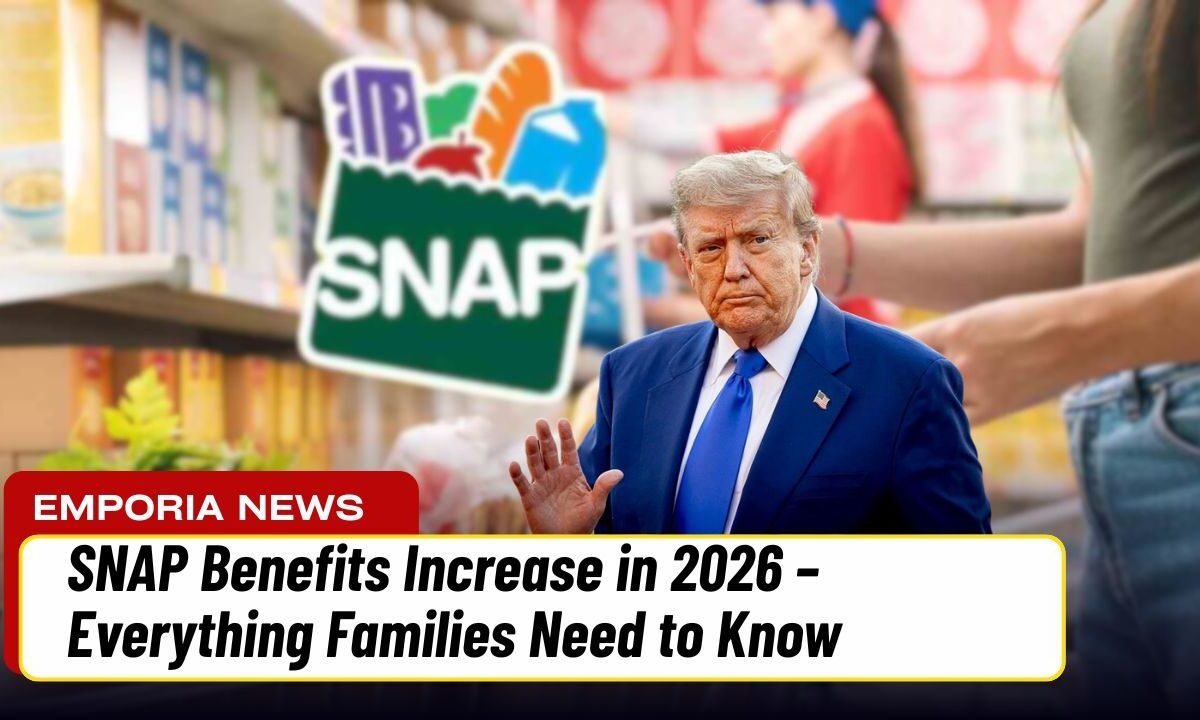Starting from October 1, 2025, the Supplemental Nutrition Assistance Program (SNAP), commonly known as food stamps, put into motion its annual cost-of-living adjustment (COLA) based on the Consumer Price Index.
This change runs through September 2026, and for most recipients it translates into roughly a 2 % boost in monthly benefits.
This enhancement is designed to help more than 42 million Americans sustain their purchasing power as grocery prices rise.
It makes it somewhat easier for families to buy nutritious items such as fruits, vegetables and dairy. At the same time, qualifying income thresholds have also shifted, giving broader access to working households.
What’s New in SNAP Benefits
Increased Gross Income Limits
The federal gross income threshold — the upper limit before deductions — has been raised by 2.6 %, which means more households may now be eligible for SNAP assistance.
Standard Deduction and Other Deductions
For households of one to three people, the standard deduction has increased to $209 per month. Additionally, deductions related to housing, childcare, medical costs for elderly/disabled, and child support have also been bumped up slightly.
These adjustments are modest but meaningful, especially for working families facing ongoing inflation.
Maximum Monthly Benefit Levels (Oct 2025 – Sept 2026)
Under the new COLA, the maximum benefit amounts for SNAP are as follows (note: higher amounts apply in Alaska and Hawaii due to their higher cost of living):
| Household Size | Maximum Benefit (Monthly) |
|---|---|
| 1 person | $291 |
| 2 people | $535 |
| 3 people | $765 |
| 4 people | $994 |
| 5 people | $1,173 |
| 6 people | $1,407 |
| 7 people | $1,605 |
| 8 people | $1,835 |
| Each additional person | +$230 |
For very low-income households, the minimum monthly benefit has increased to $24 — that’s $1 more than last year.
November Benefit Issuance Dates by State
Here’s when November 2025 SNAP payments are scheduled across states and territories:
- Alabama: Nov 4-23
- Alaska: Nov 1
- Arizona: Nov 1-13
- Arkansas: Nov 4-13
- California: Nov 1-10
- Colorado: Nov 1-10
- Connecticut: Nov 1-3
- Delaware: Nov 2-23
- District of Columbia: Nov 1-10
- Florida: Nov 1-28
- Georgia: Nov 5-23
- Guam: Nov 1-10
- Hawaii: Nov 3-5
- Idaho: Nov 1-10
- Illinois: Nov 1-20
- Indiana: Nov 5-23
- Iowa: Nov 1-10
- Kansas: Nov 1-10
- Kentucky: Nov 1-19
- Louisiana: Nov 1-23
- Maine: Nov 10-14
- Maryland: Nov 4-23
- Massachusetts: Nov 1-14
- Michigan: Nov 3-21
- Minnesota: Nov 4-13
- Mississippi: Nov 4-21
- Missouri: Nov 1-22
- Montana: Nov 2-6
- Nebraska: Nov 1-5
- Nevada: Nov 1-10
- New Hampshire: Nov 5
- New Jersey: Nov 1-5
- New Mexico: Nov 1-20
- New York: Nov 1-9
- North Carolina: Nov 3-21
- North Dakota: Nov 1
- Ohio: Nov 2-20
- Oklahoma: Nov 1-10
- Oregon: Nov 1-9
- Pennsylvania: Nov 3-14
- Puerto Rico: Nov 4-22
- Rhode Island: Nov 1
- South Carolina: Nov 1-19
- South Dakota: Nov 10
- Tennessee: Nov 1-20
- Texas: Nov 1-28
- Utah: Nov 5, 11, 15
- Vermont: Nov 1
- Virgin Islands: Nov 1
- Virginia: Nov 1-7
- Washington: Nov 1-20
- West Virginia: Nov 1-9
- Wisconsin: Nov 1-15
- Wyoming: Nov 1-4
How to Apply for SNAP
To submit an application for SNAP benefits:
- Visit the state listing on the United States Department of Agriculture (USDA) website and click your state to access the online form or locate your local SNAP office.
- Ensure you meet the following eligibility criteria:
- Reside in the state where you apply.
- Be a U.S. citizen or qualified non-citizen.
- Fall within the income and resource limits (see details above).
- Fulfil applicable work-related rules unless exempt.
- Not be disqualified due to fleeing a felony warrant, being on parole/probation for a disqualifying offense, or being institutionalized (with some exceptions for elderly/disabled).
- Note that households with an elderly (age 60+) or disabled person only need to meet the net income test, skipping the gross income test entirely. Also, many states use a policy called “broad-based categorical eligibility” (BBCE). Under BBCE, if you qualify for some state non-cash benefit (for example, TANF), you may bypass certain tests — still, you must have sufficiently low income to receive SNAP benefits.
- Income calculations:
- Gross income: your income before deductions, generally must be at or below about 130 % of the federal poverty level.
- Net income: after allowed deductions, generally must be at or below about 100 % of the poverty level.
- Allowed deductions include: 20 % of earned income, the standard deduction ($209 for households of 1–3), dependent-care costs, excess medical expenses (for elderly/disabled), child support paid, and shelter costs (capped at $744/month for non-elderly/disabled households; uncapped if elderly/disabled; homeless standard is $198.99).
In short, the 2025-26 update to SNAP strengthens the program’s ability to help millions of U.S. households amid rising living costs.
With modest increases to benefit levels, income eligibility, and deductions, the changes are designed to make it easier for working families and vulnerable individuals to access nutritious food. If you think you might qualify, now is a good time to check your state’s application page and act accordingly.
FAQs
How much has the maximum SNAP benefit increased for a single-person household?
For a one-person household, the monthly maximum benefit is now $291 for the 2025-26 period.
Do households with an elderly or disabled member follow the same income test as other households?
No. If a household has an elderly (60+) or disabled member, they only need to meet the net income test and are exempt from the gross income test.
Where can I find the SNAP application form for my state?
You can locate your state’s application by visiting the USDA’s SNAP state directory online and selecting your state to access the appropriate form or office contact.




